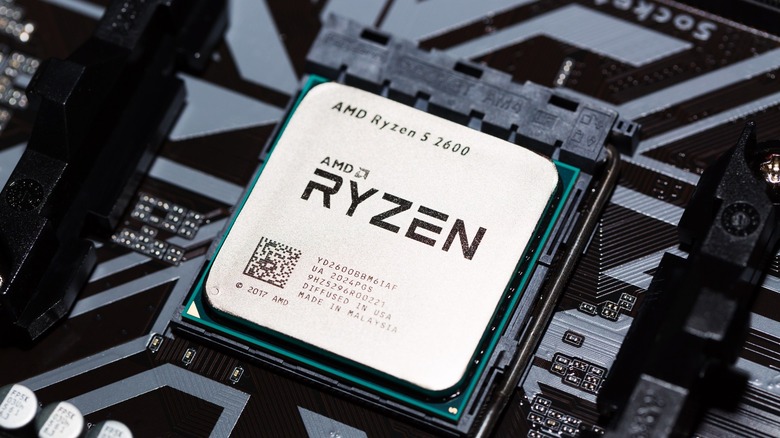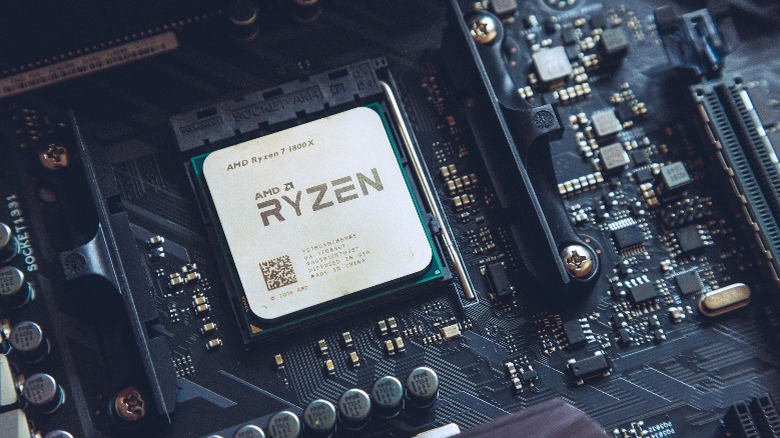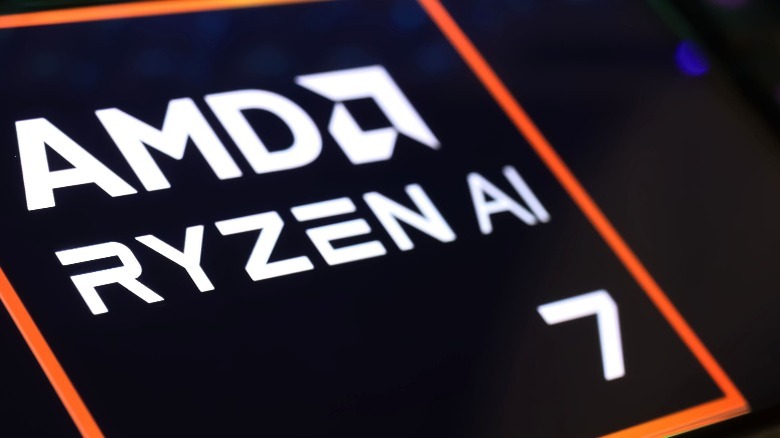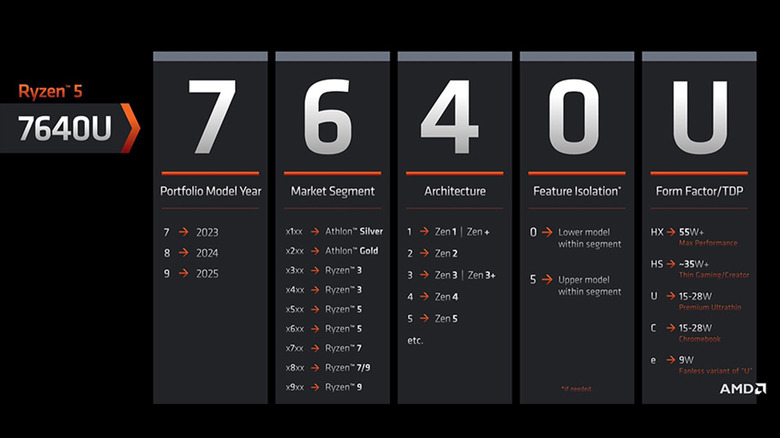What Does U, H, HS, And HX Mean In AMD Processors?
Picking parts for your gaming PC can be as challenging as it is exciting — there's a sea of options to choose from, after all, and most of your budget is going to be spent on key components like the processor, graphics card, RAM, and storage.
AMD consistently manufactures some of the best gaming CPUs alongside Intel. No matter which price point you're aiming to situate your build at, there's an AMD CPU that fits your needs perfectly. Gaming laptops, too, have been adopting AMD processors at an unprecedented rate, with an option available for nearly every budget. This is largely thanks to Red Team offering a better price-to-performance ratio with low power consumption and lots of cache in its processors.
However, if you've been in the market for an AMD-based machine, you've likely seen the rather confusing naming convention of its newer range of processors. Even if you make up your mind and pick a series, such as the Ryzen 3, 5, 7, or 9 — there are still a handful of numbers and letters in the model names of these processors that indicate important differences. Though a bit perplexing at first, once you grasp the key to understanding the model names for AMD's processors, its lineup starts making a lot more sense.
What the number in a Ryzen processor means
Ever since the unveiling of the Ryzen series in 2017, the choice between AMD and Intel has become far less one-sided. Until recently, AMD's lineup of Ryzen CPUs has had a straightforward naming scheme. This simplicity has, for some reason, been negated with newer generations of AMD's mobile processors opting for a completely different naming convention.
Thankfully, a guide shared by MSI makes it easy to understand what the different numbers and the letters at the end signify. The actual series that precedes the model name indicates which segment the processor is targeted towards. The quickest way to discern if a processor can keep up with your requirements is to narrow down your search to the major four tiers AMD CPUs are distributed in:
- Ryzen 3 is the entry-level choice that can handle most office-based tasks with ease. A bit of gaming can also be yielded out of this tier of processors.
- Ryzen 5 is best suited for those who enjoy casual gaming with a touch of productivity. Higher-end models of the Ryzen 5 are often used in mid-tier gaming rigs for their value proposition.
- Ryzen 7 unlocks even greater performance, enabling you to run demanding games and handle 4K video editing.
- Ryzen 9 pushes things to the extreme and is ideal for simulation and 3D modeling programs, besides high-end gaming.
Ryzen processor letters explained
After you've picked the tier of CPU you want to go ahead with, there's the actual model name, that's often five or six-digits in length. At the end of this model number, you'll find either one or two letters — these dictate the form factor of the processor. The Thermal Design Power, or TDP for short, represents the power consumption of a processor under maximum load. AMD's Ryzen lineup currently uses the following suffixes to represent different form factors or TDPs:
- HX (55W+): Maximum performance, usually reserved for top-of-the-line gaming laptops.
- HS (35W+): High performance, best suited for laptops with comparatively thin profiles.
- U (15-28W): Optimized for ultrathin and productivity-oriented laptops.
- C (15-28W): Designed for Chromebooks.
- e (9W): Geared towards laptops with fanless designs.
If you are in the market for a gaming laptop capable of handling AAA titles like "Black Myth: Wukong" or the upcoming PC version of "Marvel's Spider-Man 2," the HX variants of AMD processors are going to deliver the best performance, though there are other important considerations to make when choosing the right gaming laptop besides just the processor. Subsequently, if you're looking for an office workhorse, you'll benefit from the HS or U series of AMD processors that often bring better battery performance.
Understanding AMD Ryzen CPU model names
Though the form factor of a CPU is a good way to filter your options, AMD Ryzen processors have a few other digits in the model name that are worth familiarizing yourself with:
- The first digit indicates the year the CPU was released. It starts with 7 for 2023, 8 for 2024, and so on. The higher the number, the newer the processor.
- The second digit defines the market segment, ranging from Athlon Silver to Ryzen 9. This usually goes hand in hand with the Ryzen tiers we've discussed earlier.
- The third digit displays the architecture of the CPU. This can range from Zen 1 to Zen 5 and beyond. Each architecture features improvements in the fabrication process.
- The fourth and last numeric digit simply helps differentiate two models within the same segment, depending on their performance. The higher-end variant is denoted by the number 5, and the lower-end model retains a 0 in this position.
- The final digit is reserved for the form factor of the CPU. These codes are often an effective way to determine what type of tasks the CPU is designed to handle best.



